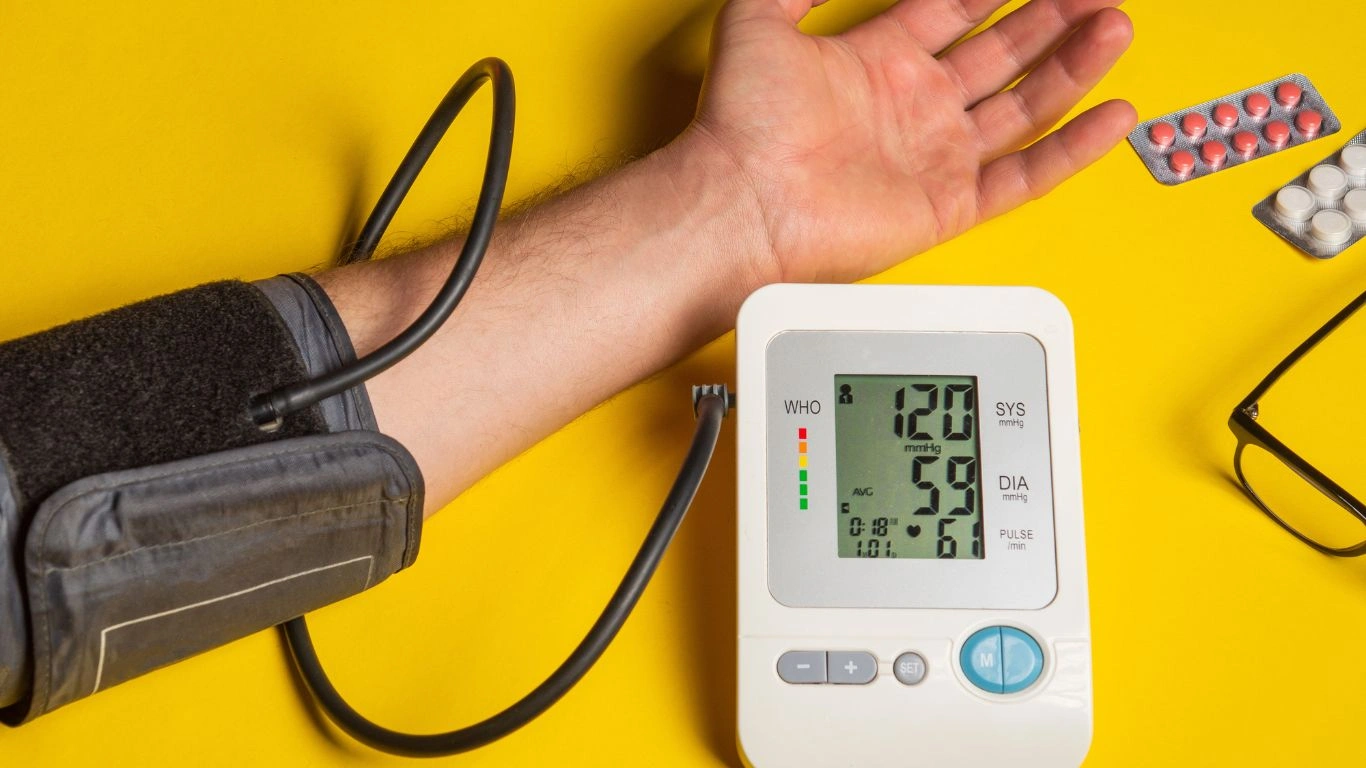The Best Leafy Greens for Blood Pressure That Actually Work
When it comes to managing high blood pressure naturally, the best leafy greens for blood pressure might just be hiding in your fridge or produce drawer. As an internal medicine physician who’s been in the hypertension trenches for over a decade, I’ve seen firsthand how something as simple as leafy greens can make a measurable difference. We’re talking real results—lower readings, reduced medication dependence, and happier patients. It’s honestly one of the most underrated tools in our toolkit. So if you’ve been looking for a practical, no-nonsense way to take control of your numbers, leafy greens are a solid place to start. Let’s dig into the leafy goodness and why your blood pressure will thank you.
Why Leafy Greens Matter for Blood Pressure

You’ve probably heard that leafy greens are good for you. But let’s go a little deeper. Most leafy greens are rich in potassium, magnesium, fiber, and nitrate—all of which are key players in blood pressure regulation. Potassium helps balance out the negative effects of sodium. Magnesium supports vascular tone. Nitrates help with blood vessel dilation. It’s like giving your arteries a spa day. And the fiber? That helps manage weight and blood sugar, both of which impact blood pressure.
From my clinic to my kitchen, I’ve seen folks turn their lives around simply by being more intentional with what they’re putting on their plates. It’s not magic—it’s biochemistry, and it works.
What Makes a Green “Leafy”?
Let’s get one thing clear: not all greens are leafy, and not all leafy things are power-packed. When we talk about the best leafy greens for blood pressure, we’re talking about veggies like:
- Spinach
- Kale
- Collard greens
- Swiss chard
- Arugula
- Romaine lettuce
- Beet greens (don’t toss them!)
These aren’t just salad fluff—they’re nutritional powerhouses. I often tell my patients: if it’s dark green, leafy, and looks like it came out of a garden, you’re probably on the right track.
Spinach: The Classic Blood Pressure Buddy

Spinach has been a go-to green for a reason. It’s affordable, easy to find, and packed with potassium and magnesium. One cup of cooked spinach contains over 800 mg of potassium. That’s more than you’ll get from a banana. Add in the nitrates, and spinach starts to look like a blood pressure multitool. Personally, I keep frozen spinach in my freezer at all times—toss it into smoothies, soups, or scrambled eggs and you’ve got a quick win for your heart health.
Pro tip from the exam room
I had a patient—we’ll call her Linda—who couldn’t stand the taste of spinach. But when we looked at her sodium-to-potassium ratio, it was totally out of whack. She started blending it into berry smoothies (she swore you couldn’t taste it), and her systolic pressure dropped by 12 points in three months. That’s the power of food as medicine.
Kale: The Overachiever

Ah, kale. The green that launched a thousand memes. But underneath the health-food hype is a serious contender in the blood pressure game. Kale is ridiculously rich in potassium and also delivers a respectable dose of calcium and magnesium. Plus, it’s versatile—raw in salads, sautéed with garlic, tossed into a stir-fry, or even baked into chips (yes, really). If you’ve avoided kale because of the toughness, try massaging it with a little olive oil and lemon juice. It softens up beautifully and becomes way more enjoyable.
Doctor’s take: Why I recommend kale
Kale has made a noticeable difference for patients who are borderline hypertensive and not quite ready for meds. I usually suggest rotating it with spinach and chard during the week for variety and a broader spectrum of nutrients. I also eat it myself a few times a week—sometimes raw, sometimes tossed into a quick pasta. It’s an easy win that supports your heart and your taste buds.
The Potassium Connection
If there’s one mineral you should get familiar with when it comes to blood pressure, it’s potassium. The average American diet is way too high in sodium and way too low in potassium. That imbalance contributes to increased vascular resistance, which can push your numbers up. Leafy greens help correct that imbalance naturally. Just one serving can make a dent. And when you’re consistent, the effects compound.
How to maximize potassium without going overboard
- Pair greens with healthy fats—olive oil helps nutrient absorption.
- Skip the salt when cooking greens—use garlic, lemon, and spices instead.
- If you have kidney issues, talk to your doctor before loading up on high-potassium foods.
As someone who regularly monitors electrolyte panels, I can’t stress enough how powerful a tool potassium can be—when used wisely.
Collard Greens: The Southern Staple with Heart Benefits

Let me tell you—collard greens are more than just a side dish at Sunday dinner. These dark, broad leaves are packed with potassium and calcium, and they’ve got a fiber punch that can rival some of the trendier greens. I grew up in a family where collards were simmered low and slow with garlic, a dash of apple cider vinegar, and—okay, yes—a little smoked turkey leg for flavor. It wasn’t just tasty; it was doing us a favor behind the scenes, helping regulate blood pressure before I even knew what a sphygmomanometer was.
For patients with cultural ties to Southern cooking, I always say: don’t ditch your roots, just tweak the preparation. Skip the added salt and pork fat, go heavy on garlic, onions, and herbs, and you’ve got a blood pressure-friendly dish that still feels like home.
Doctor’s Insight
One of my hypertensive patients of Caribbean descent started swapping her usual rice and peas for sautéed collards with lentils. Within six weeks, her BP dropped by 8/6 mmHg and she felt more energetic. Her only regret? Not starting sooner.
Swiss Chard: The Colorful Underdog

If kale is the overachiever and spinach is the classic, Swiss chard is the colorful underdog that doesn’t get enough credit. With its rainbow stalks and tender leaves, chard is like a multivitamin in veggie form. It’s got magnesium, potassium, and antioxidants galore. Plus, it has a slightly earthy flavor that pairs beautifully with lemon juice and olive oil.
I like to wilt it gently in a skillet with a little avocado oil and garlic, then toss it over quinoa or farro. It’s fast, filling, and honestly feels like a recharge after a long clinic day.
Why Swiss Chard Deserves a Spot in Your Rotation
- One cooked cup delivers nearly 20% of your daily potassium.
- It supports endothelial function (that’s doctor-speak for helping your blood vessels relax).
- It plays well with Mediterranean-style dishes—which are already heart-friendly.
And if you’re dealing with high blood pressure and want to make your meals prettier and healthier at the same time? Chard’s your go-to.
Beet Greens: The Unsung Hero

Real talk: most people throw out beet greens without realizing they’re tossing pure gold. These leafy tops are packed with nitrates, which your body converts into nitric oxide—a compound that helps blood vessels relax and expand. This means improved circulation and lower pressure in the pipes.
I once had a patient who loved roasting beets but never touched the tops. Once she started saving them and tossing them into her veggie soups, she actually saw more benefit from the greens than the roots. Beet greens are slightly bitter (think along the lines of mustard greens), but sautéed with onions and paired with a splash of balsamic vinegar? Game-changer.
Top Tips for Cooking with Beet Greens
- Use them within 2–3 days of buying—they wilt fast.
- Mix them with milder greens like spinach or romaine to balance the flavor.
- Don’t forget the stems! Dice them up and cook them like celery for extra crunch.
They’re a humble, nutrient-dense ingredient that fits beautifully into any meal plan aimed at tackling hypertension from the ground up.
The Best Leafy Greens for Blood Pressure: Mixing & Matching
Now here’s where things get fun. One of the best ways to get the full benefits of leafy greens is to mix it up. No one green has it all, and rotating your greens keeps your taste buds interested while giving your body a broader nutritional profile. From a practical standpoint, it also helps prevent oxalate buildup, which can be a concern for folks prone to kidney stones.
My Weekly Greens Rotation Strategy
- Monday: Sautéed kale with garlic and red chili flakes
- Tuesday: Spinach smoothie with berries, flax, and almond milk
- Wednesday: Chard and chickpea stir-fry with turmeric
- Thursday: Romaine and arugula salad with grilled salmon
- Friday: Beet green soup with lentils and cumin
This isn’t a rigid meal plan—just a real-world example of how I keep it fresh and doable. Patients who approach leafy greens as ingredients rather than “chores” tend to stick with them longer and see better results.
When to Be Cautious
While leafy greens are generally safe, I always advise certain patients to keep an eye out. If you’re on blood thinners like warfarin, suddenly ramping up your greens (especially the vitamin K-rich ones) can mess with your INR levels. And anyone with advanced kidney disease needs to talk to their doctor before loading up on potassium-rich foods.
Bottom line? Leafy greens are amazing—but like any powerful tool, they work best when used with care and a little guidance.
Arugula: The Peppery Powerhouse

Let’s talk about arugula. It’s not just fancy salad garnish—it’s one of the best leafy greens for blood pressure you can add to your plate. This peppery little leaf is part of the cruciferous veggie family (same team as broccoli and Brussels sprouts), and it brings a surprising amount of nitrate to the table. Nitrates, again, are your blood vessels’ best friend—they help dilate and relax those vessels, making it easier for your heart to do its job.
In my own meals, I use arugula as more than just salad filler. Toss it on top of a homemade pizza after baking. Mix it into scrambled eggs. Blend it with basil for a spicy twist on pesto. The flavor is bold, which means you don’t need much to get that benefit—or the taste.
Clinical Perspective
I had a patient who worked in finance—high stress, little time, borderline hypertensive. He started keeping pre-washed arugula in his work fridge. Every lunch, he’d throw a handful onto his sandwich or grain bowl. After two months, his systolic pressure dropped by 10 points and his resting heart rate came down too. No meds, just greens and some mindfulness work. Small changes. Big shifts.
Romaine Lettuce: The Underrated MVP

Romaine might not get the same love as kale or chard, but don’t let that fool you. It’s low in calories, high in water content (hydration helps lower blood pressure, by the way), and still offers solid potassium and magnesium content. Plus, it’s usually easier on the digestive system for people who are new to leafy greens or prone to bloating.
And here’s the best part—it’s super versatile. Throw it into wraps, use it as a burger “bun,” or make a big chopped salad with avocado, beans, and lemon vinaigrette. You can eat a lot of it without feeling overloaded, which is perfect for boosting your intake naturally.
Why I Recommend Romaine for Beginners
When I first talk to newly diagnosed patients about increasing greens, I always ask what they already like. Nine times out of ten, someone says, “I can do romaine.” Great! That’s a win. You don’t have to eat exotic superfoods to see results—you just have to start where you are and build from there. It’s like I always tell my patients: the best leafy green is the one you’ll actually eat.
How to Make Leafy Greens a Habit
All the leafy greens in the world won’t help if they rot in the back of your fridge, right? This is where the real magic happens—turning knowledge into habits. Because once eating greens becomes second nature, it stops being a chore and becomes just…life.
Tips From My Own Routine
- Prep once, eat all week: Wash and store greens right after shopping. I use glass containers lined with paper towels to keep them crisp longer.
- Make it visual: I keep a big bowl of ready-to-eat salad front and center in the fridge. When I open the door, it’s staring right at me like, “Eat me, Gwenna!”
- Lean on convenience: Pre-washed organic blends are a lifesaver for busy weeks. No shame in using shortcuts if they help you stay consistent.
- Mix it up: Each week, I pick 2–3 greens to rotate. Keeps my palate interested and my gut happy with different fibers.
And if you’re someone who gets overwhelmed trying to change everything at once? Don’t. Start with one meal a day. Add a handful of greens to your lunch wrap or morning smoothie. Stack those little wins.
Leafy Greens and Medication: What You Need to Know
As much as I’m a fan of food-as-medicine, I always caution patients: if you’re on blood pressure meds or blood thinners, talk to your provider before drastically increasing greens—especially those high in vitamin K like kale and spinach. These can interfere with warfarin and affect clotting time. Also, anyone with advanced kidney disease needs to be potassium-conscious.
That said, for the vast majority of people? Eating more leafy greens is not only safe—it’s transformative. And often, as I’ve seen many times in clinic, it can help you reduce or even eliminate the need for medication over time (with medical supervision, of course).
Final Thoughts: Real Food, Real Impact
Over my years in practice, I’ve seen dozens—maybe hundreds—of cases where patients improved their blood pressure simply by adding greens into their daily routine. Not supplements. Not fad diets. Just real, vibrant food from the earth. And it doesn’t have to be complicated or expensive. It just has to be consistent.
If you take anything from this article, let it be this: your plate is powerful. The choices you make day in and day out can shift your numbers, your energy, your health trajectory. So grab that bunch of kale, that box of romaine, that handful of arugula—whatever feels doable. Your heart will thank you for it.
References
Disclaimer
This article is for informational purposes only and does not constitute medical advice. Always consult with your physician or a qualified healthcare provider before making changes to your diet, especially if you are on prescription medication or have a chronic health condition.

Dr. Gwenna Aazee is a board-certified Internal Medicine Physician with a special focus on hypertension management, chronic disease prevention, and patient education. With years of experience in both clinical practice and medical writing, she’s passionate about turning evidence-based medicine into accessible, actionable advice. Through her work at Healthusias.com, Dr. Aazee empowers readers to take charge of their health with confidence and clarity. Off the clock, she enjoys deep dives into nutrition research, long walks with her rescue pup, and simplifying medical jargon one article at a time.






